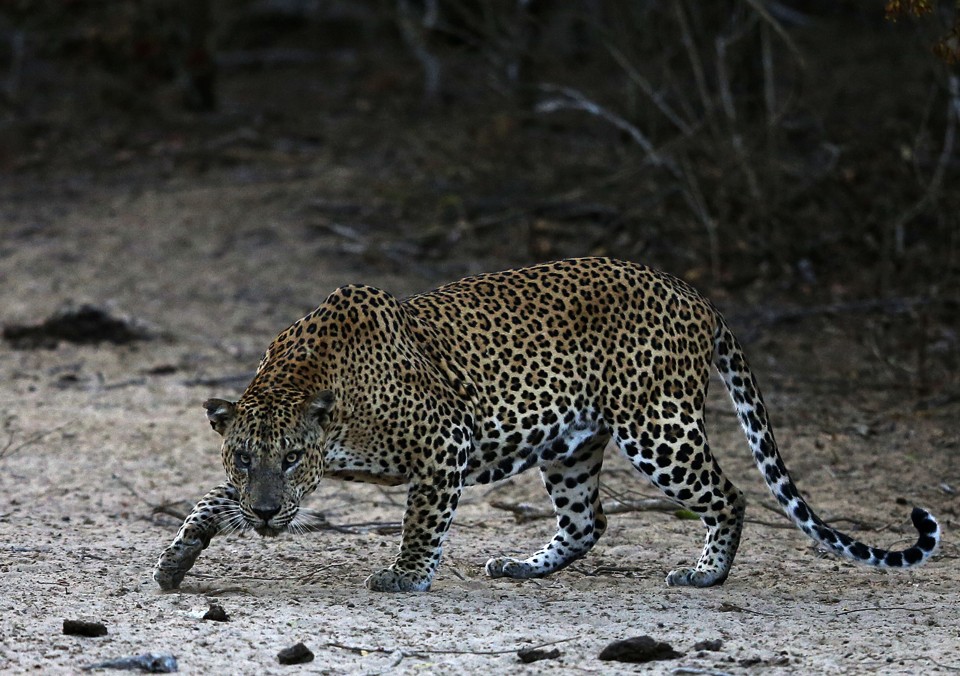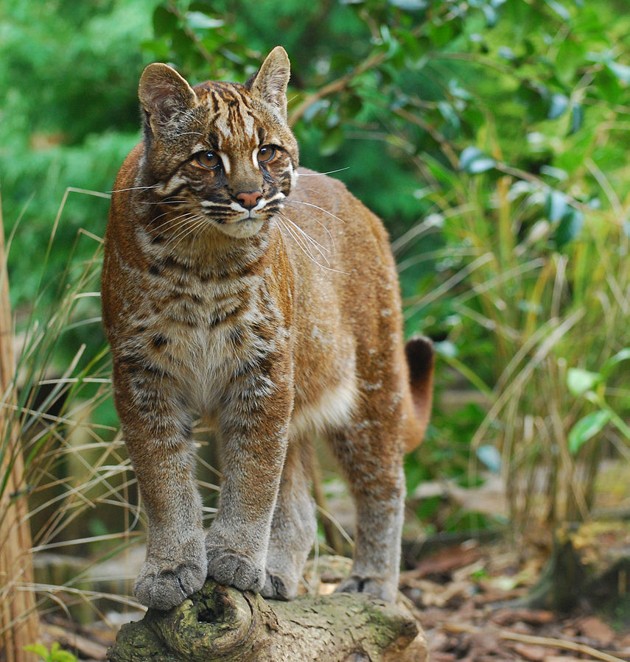The mystery that spans every feline, from tabby house cats to Siberian tigers.

The cat has other plans. We see its tiger-striped face peer through the hole and then disappear. We wait. Nothing. “It probably knows we're here,” says John Hutchinson, one of the expectant researchers. We move to the side so as not to be seen, leaning our heads around the wall of the cage like characters in a cartoon. We are, I realize, trying to out-stealth a cat. It's going about as well as you'd expect.
Golden cats normally live in the jungles of southeast Asia, but this one currently resides in Hertfordshire, England, within the grounds of a charity called the Cat Survival Trust. The Trust's twelve-acre site, manned by volunteers, is home to several species of wild cats, including unwanted animals from various zoos and smuggled individuals seized by customs officials.
Hutchinson's team still isn't having any luck with the golden cat. Postdoc Andrew Cuff walks round to the outdoor section to try and flush the animal in, while undergraduate student Luke Grinham mans the equipment. But the cat simply prowls around, watching the hole, twitching its tail nervously, and ignoring the rain that starts to fall.
“Meow?” says Grinham.
Today, cats span a huge range of sizes. The rusty-spotted cat of India and Sri Lanka weighs just one kilogram, while the mighty Siberian tiger is 300 times heavier. And yet, these animals are surprisingly similar. “It's famously said that a lion is just a scaled-up house cat,” says Anjali Goswami from University College London, who works with Hutchinson. “That's very weird.”
Their legs are especially odd. When animals get bigger, their posture changes. Their legs tend to straighten, becoming stiffer and more pillar-like to better support their weight. Not so with cats. When a lion strides across the savannah, it has essentially the same posture as the domesticated tabby that slinks over your lap. Lions, tigers, and leopards—oh my—are, as Hutchinson writes, the only large, crouching mammals.
The team is now trying to solve the mystery of the crouching tiger by guiding different cat species over force plates—fancy 3-D bathroom scales that will measure the forces they produce with each step. Meanwhile, a camera will record the positions of their legs. By combining this information, the team can work out how cats differ in their movements, and whether the big ones have any biomechanical tricks that compensate for their unexpected postures.
Hutchinson is an old hand at such studies. He has guided rhinos, emus, elephants, salamanders, horses, and penguins over force plates before. Each species presents its own challenges. Giraffes were especially easy; cats, less so. The tigers of Colchester Zoo were terrified of the force plates and the researchers themselves—were, in turn, terrified of the tigers. But after a lot of chicken bribes (and a few rubber mats that were torn apart by the animals), the team got the data they needed. Here's what it looks like when things go well: a tiger strides purposefully through a wooden walkway and over a force plate embedded in the floor:
Having captured data for panthers, pumas, tigers, and cheetahs, the team are now trying to study smaller cat species, and the Cat Survival Trust has several. “We’re mostly playing it by ear because we don’t know how these animals are going to behave,” Hutchinson tells me. “It’s unpredictable what’s going to happen here so we’re going to start with a relatively easy animal.”
The problem is that, acclimation aside, Pudding is still a cat—an innate master of not doing what you want him to do. He pounces on the force plates. He walks around them. He steps on to them but then leaps off. He mooches on top of them. He bites the power cables. Hutchinson asks if he can go in the cage and try to lead Pudding around. Sure, says the keeper, “but he's got a thing for trying to sever your spinal cord.” The keeper goes in with Pudding's teddy—a well-chewed soft toy lynx!—and tries to lead him around, but he leaps and twists and runs, instead of purposefully walking over the plates like the Colchester tiger. “We need a bored cat,” says Hutchinson.
As we watch, I ask him if this study will lead to any medical insights that would be important for cat owners. It won't. It's simply about the evolution of these endearing animals. “It’s a basic science project,” he says. “It’s curiosity-driven.”
Curiosity, huh? Maybe that’s why the cats aren’t cooperating.
source

No comments:
Post a Comment